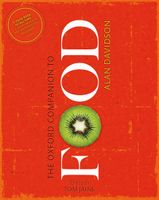Advertisement
Pig : Pork Taboos
Published 2014
A certain ambivalence in attitude runs through the history of the pig. In religion it often has sinister connotations; for instance one manifestation of the Indian goddess Kali is as a black sow which consumes her young. Some peoples now refuse absolutely to touch it; but in prehistoric times, pigs were used as food animals in areas in which they are now strictly taboo. Their remains have been found at sites in Mesopotamia, where the Sumerians were keeping pigs and eating pork during the 3rd millennium bc. Similarly, pigs were used for food at the Indus Valley site of Mohenjo-Daro, disappearing after the arrival of Indo-European invaders. Egyptian peasants continued to keep pigs as late as 1350 bc, and pork was allowed as food on certain holy days. Yet only about 800 years later Herodotus remarked of the Egyptians: ‘The pig is regarded among them as an unclean animal, so much so that if a man in passing accidentally touch a pig, he instantly hurries to the river, and plunges in with all his clothes on.’ The Jews (see jewish dietary laws) and Muslims (see muslims and food) have shared this prohibition for many centuries, but not since the very earliest times, as archaeological remains testify.


